|
The elephant is the largest animal on earth’s surface and the Asian elephant has been an integral part of various customs and traditions of Indian people. Recent estimates of elephant populations indicate the presence of over 26,000 elephants in India. The elephants occupy very large areas and are regarded as ‘Umbrella species’ because if they are conserved, a lot of other species occupying that same area will also be conserved. They are also regarded as premier ‘Flagship species’ and sometimes also called ‘Keystone species’ because of their important role in ecology and environment. The Asian elephants have been described as endangered by the Wildlife Protection Act, 1972 (Appendix-1) and by Appendix 1 of the Convention of International Trade of Endangered Species of Flora and Fauna (CITES) in 1975.
GUNDIA BASIN: VITAL PART OF MYSORE ELEPHANT RESERVE
The Elephant Reserves are the protected areas recognized by the state governments and managed by the forest departments, meant for the conservation of elephants. Areas adjacent to National Parks and sanctuaries and those areas which link one protected area with another, are designated as a conservation reserve for protecting landscapes, seascapes, flora and fauna and their habitat as per The Wildlife (Protection) Act, 1972, Section 36-A amended by The wildlife (Protection) Amendment Act, 2002. The provisions of sub-section (2) of section 18, sub-sections (2), (3) and (4) of section 27, sections 30, 32 and clauses (b) and (c) of section 33 shall, as far as may be, apply in relation to a conserve reserve as they apply in relation to a sanctuary. Till now, 24 Elephant Reserves have been officially notified by the State governments and 6 others are in the process. The Mysore Elephant Reserve was notified by the Karnataka Government in November, 2002 (Vide GO FEE 231 FWL 2000, 25/11/2002). It covers the total area of 6,724 sq.km. The Bisle Reserve Forest of Gundia Basin, vide the said GO, constitutes a vital part of the Mysore Elephant Reserve. It covers an area of 3,339 ha (Survey Number I and II in Bisle reserve forest - Details attached next). It adjoins Kempholé Reserve Forest in north and Pushpagiri Wildlife Sanctuary in the south. It is an integral and important part of the Mudumalai – Nagarhollé – Brahmagiri – Muttodi Corridor. With rainfall in the range of 500-600 cm, Bisle Reserve mainly consists of species rich evergreen forests. Notification of Government of Karnataka and areas identified under Mysore Elephant Reserve are given next.

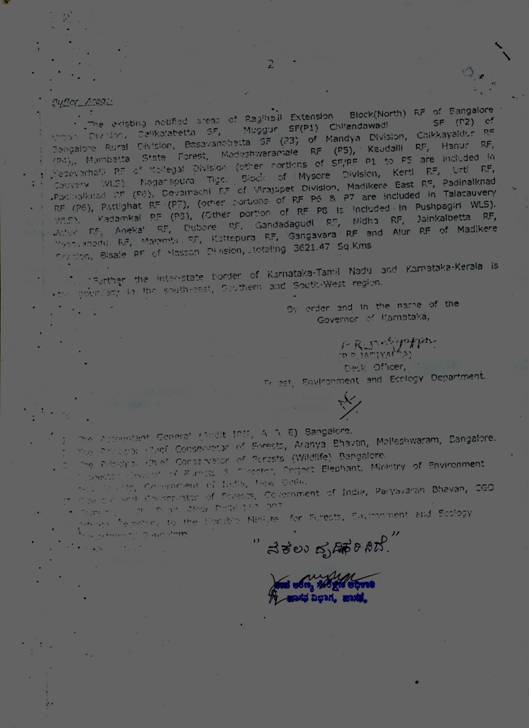
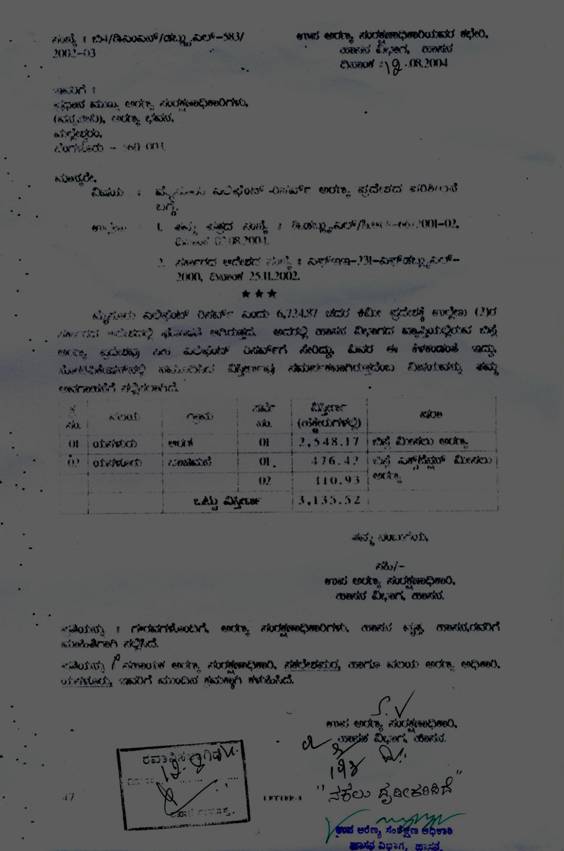
According to the Indian Forest Act (1927), a forest area is designated as a reserved forest by the state governments through a notification in the Office Gazette. This law disallows any kind of tree felling activity, grazing of animals, clearing of land, collection of forest products, establishing manufacturing processes, stone quarrying and setting fire in the reserved forest area. The Wildlife Protection Act (1972) prohibits the destruction or diversion of wildlife and its habitat in any manner unless it is for some improvement or better management and that too it is to be decided by state government in consultation with national agencies and wildlife boards. The Elephants Preservation Act, 1879 (6 of 1879) disallows the killing or catching of elephants in such forests.
GUNDIA BASIN - LINKS PRIME ELEPHANT CORRIDORS
The movement of elephants from one reserve to another allows the exchange of genetic materials between populations and thereby, prevents inbreeding depression. Such movements of elephants from one reserve to the other require adequate forest cover connecting the two, which are referred to as ‘Elephant Corridors’. In India, 88 elephant corridors have been identified. The corridors enhance the connectivity between important conservation sites and increase the associated biodiversity.
Ten Elephant landscapes covering contiguous reserves in adjacent states have been recommended by the Elephant Task Force (Gajah, 2010), Ministry of Environment and Forests, Government of India. Brahmagiri-Nilgiri-Eastern Ghats elephant landscape connects the Gundia river basin with Bandipur, Nagarholé national park and Mudumalai wild life sanctuary constitute one vital elephant corridor in South India. The landscapes need to follow a three-tier conservation mode if they are to be successful at a holistic level. The PAs within the landscapes need the best level of protection by government agencies to ensure maintenance of their ecological integrity and the viability of elephant populations. In these, the Protected Areas need a more strict level of protection and conservation. In contrast the areas that lie outside the Elephant Reserve (ER) of the landscape need more cooperative models of conservation such as community-based conservation, community forests, public-private partnership or ecosystem payment services. At a larger level, the Elephant Landscape’s (EL) may well include one or more ER’s. The larger landscape areas beyond the ER limits will require government to be a facilitator and coordinator of activities that may be beneficial or harmful to elephants. This will involve cooperation with undertakings such as railways and highways, local bodies such as panchayats, government departments such as agriculture and animal husbandry and private landowners.
GUNDIA Basin – Part of Brahmagiri- Nilgiri –Eastern Ghat Elephant Landscape
The Brahmagiri – Nilgiris – Eastern Ghats population extends from Brahmagiri Hills to the south through the Nilgiri Hills and east through the Eastern Ghats in the states of Karnataka, Tamil Nadu and Kerala with a splinter group in Andhra Pradesh distributed over 12000 km2 of habitats. A number of the Protected Areas including Bandipur, Nagarhole, Mudumalai, Wyanad, Biligirirangan Swamy Temple, Kaveri and Brahmagiri fall within the area. In this vast habitat the connectivity between Nagarahole Tiger Reserve and Brahmagiri Wildlife Sanctuary is broken by the presence of coffee estates. Elephants from Nagarahole Tiger Reserve move to Brahmagiri Wildlife Sanctuary.
The diversity in the vegetation ranging from the dry thorn forest to the montane shola grasslands make it one of the best elephant reserves in the country with a demographically and genetically viable population. This is the largest population of elephants in the country and possibly in Asia.
The large extent of the habitat with diverse vegetation types and a number of cash crop cultivated areas and human settlements within make it also one of the most complex regions in terms of conservation challenges. Maintenance of habitat continuity through the existing corridors or through consolidation of habitat minimizing or mitigating the ill effects of human-elephant interaction and control of poaching, control of fire and other degradation factors would help maintaining the integrity of habitat.
There are two important Traditional Migratory Routes in the Southern India passing through the Gundia Basin.
1. Mudumalai – Nagarholle – Brahmagiri – Muttodi Migratory Path
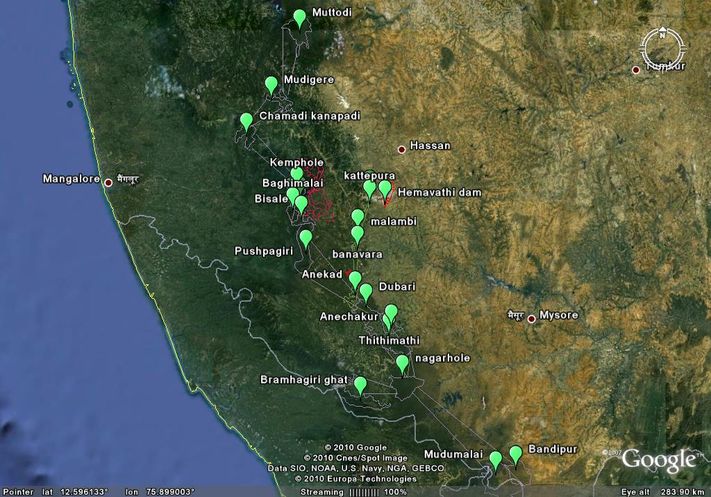
Figure 3.1: Mudumalai – Nagarholle – Brahmagiri – Muttodi Migratory Path
This migratory path extends from Mudumalai National park in Tamil Nadu upto Muttodi region in Karnataka. It includes Mudumalai National park, Bandipur National Park, Nagarholé National park, Anechaukur, Thithimathi, Dubare, Somwarpet, Brahmagiri and Pushpagiri Wildlife Sanctuaries, Bisale RF, Kaginahare, Kachinkumari, Charamadi, Kempholé, Mudigere and Muttodi. The elephants move from Mudumalai national park towards Nagarholé, further via Pushpagiri WLS and Bisle RF upto Muttodi. This migratory path is composed of diverse vegetation types ranging from wet evergreen forests to semi-evergreen forests, moist deciduous forests, swamps, riverine vegetation, shola forests and grasslands. Such rich and diverse pattern of vegetation provides ample resources for elephants moving on this route.
Following the announcement of Hydroelectric projects in the Gundia Basin (the Minihydel project in Kempholé already commissioned), there has been a spate of human activities related to road construction, transportation and associated illegal logging. These large scale land cover changes in recent times (post 2000) have fragmented the forests and disrupted this migratory path contributing to increased Human-Elephant conflicts.
2. Nagarhole – Malambi – Dodabetta – Hemavathi Migratory Path
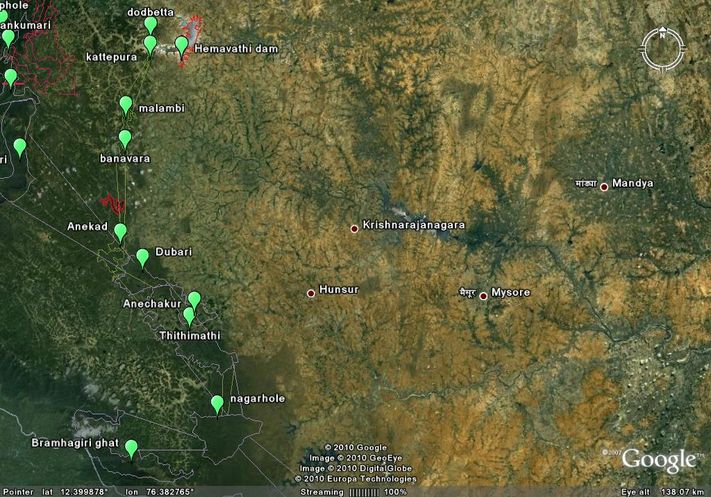
Figure 3.2: Nagarhole – Malambi – Dodabetta – Hemavati Migratory Path
This migratory path extends from Nagarhole National park and passes via Tithimati, Annakadu, Banavre, Malambi reserve forest, Bysur, Kattepura, Dodabetta reserve forest upto Hemavati reservoir near Hassan district in Karnataka (Figure 2.2). A majority of this corridor passes through the Kodagu district of Karnataka which is very rich in coffee and cardamom plantations. The Dodabetta and Kattepura Reserve forests are largest forest patches in this area and contain dry deciduous to moist deciduous forests which are preferred by the elephants, but due to fragmentation their sizes have been reduced to 325 and 250 ha respectively. This is due to construction of Harangi and Hemavathy dams which submerged the elephant habitat and disrupted the migratory path from Nagarholé National park upto Hemavathi reservoir including Dodabetta and Kattepura Reserve forests. The development of agriculture and coffee plantations also supported in this cause. Apart from Dodabetta and Kattepura no major reserve forest patches for elephant habitat are found in reasonable distance.
HABITAT FRAGMENTATION AND SHRINKAGE:
In the recent decades, construction of roads, railway lines, irrigation and hydroelectric projects, industrial setups and human settlements have adversely affected the migratory movements of the elephants. Such developments have resulted in small number of elephants getting trapped in fragments of forests. For example, the construction of Hemavati and Harangi Reservoirs in the Hassan district resulted in severe forest fragmentation. A herd of 23 elephants got isolated in Dodabetta - Kattepura forests (325 and 250 ha respectively). These elephants periodically keep moving towards the Gundia Basin through the villages in between leading to increased Human-Elephant conflicts.
When an organism’s preferred habitat develops discontinuities or fragments it is referred to as fragmentation. Due to rapid unplanned developmental activities the problem of habitat fragmentation is faced by many species. Fragmentation results in breaking of one big patch into many smaller patches, the total area of the habitat decreases and each habitat fragment becomes isolated from other habitats. The shrinkage of habitat causes adverse effects on population of big animals like elephants as such small habitats can support only small populations of plants and animals.
The animals like Asian elephant and Tiger require a large landscape cover in order to survive and fulfil their requirements. However, the large scale developmental activities by humans have led to fragmentation and shrinkage of forest cover which has resulted in severe depletion of elephant habitat. Non-developmental activities like agriculture, monoculture plantations, grazing and wood collection from forests have also contributed to the degradation of forest land, but their effects are not on large scale as compared to developmental activities.
Lot of elephant deaths are also caused by the high tension electric wires (Figure 3.3). The construction of hydroelectric projects also involves laying down of long electric wires. Sometimes the elephants accidentally come into contact with such wires and get electrocuted resulting into their death.
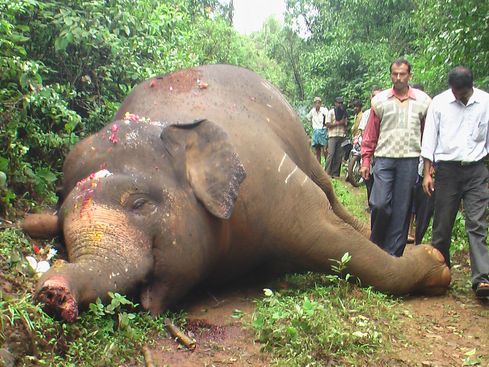
Figure 3.3: Elephant death due to HT (Shettihalli, Hongadhalla Panchayat)
It has also been seen that due to shrinkage of habitat and increasing human settlements, often there occurs conflicts between humans and elephants. Since these fragmented habitats often do not contain enough resources for elephants, they venture into nearby agricultural lands and plantations leading to raiding of crops in the field. Sometimes these elephants injure and also cause death of humans they encounter and the humans when they encounter the elephants tend to kill it. In last few years only the Bisle reserve forests and adjoining areas have faced the fury of elephants as result of which more than 2000 applications were filed with the government by the local people asking for compensation for the cropland destroyed by elephant trampling. Table 3.1 lists the details of elephant death in the region during the last five years. There also have been cases about human deaths and injuries caused by the elephants in this region. Hence, it has become necessary to develop communication between forest department and locals along with panchayats and government to form a strategy for reducing such incidences.
| Table 3.1: Details of the dead elephants during the last 5 years in Hassan division (as per KFD, Hassan division) |
| Sl No |
Year |
Place |
Date of death |
Gender |
Age |
Reason for death (Postmortem report) |
| 1 |
2004-05 |
Sakaleshpura |
03.12.2004 |
Male |
6 Yrs |
Due to Highly Purified organs, but suspected for generasled septiumia |
| 2 |
2005-06 |
- |
- |
- |
- |
- |
| 3 |
2006-07 |
Yasalluru |
20.03.2007 |
Female |
23-25yrs |
Electrocution |
| 4 |
2007-08 |
Aalluru |
04.09.2007 |
Female |
2 Yrs |
Sudden Pressure on the Diaphram and lung by any external hardmum |
| 5 |
2007-08 |
Aalluru |
16.11.2007 |
Male |
28 Yrs |
Sudden Pressure on diapharma and lungs by adbornianl organs due to sternal recumbany causes acute respiratory distress asphyxias shock & death |
| 6 |
2007-08 |
Aalluru |
03.12.2007 |
Female |
35 Yrs |
Sudden Pressure on diapharma and lungs by adbornianl organs due to stemal recumbany causes acute respiratory distress asphyxias shock and death |
| 7 |
2007-08 |
Sakaleshpura |
04.12.2007 |
Female |
7-8 Yrs |
Due to Highly Purified organs, but suspected for generasled septiumia |
| 8 |
2008-09 |
Yasalluru |
30.06.2008 |
Male |
30 Yrs |
Electrocution |
| 9 |
2008-09 |
Yasalluru |
03.08.2008 |
Single tusked |
25 Yrs |
Electrocution |
| 10 |
2008-09 |
Aalluru |
27.10.2008 |
Female |
18 Yrs |
Acute Bloat May be the cause for the death of animal |
| 11 |
2008-09 |
Aalluru |
30.11.2008 |
Male |
30 Yrs |
Electrocution |
| 12 |
2009-10 |
Yasalluru |
22.05.2009 |
Male |
25 Yrs |
Shock & Asphyxia |
| 13 |
2009-10 |
Aalluru |
03.10.2009 |
Male |
Yrs |
|
| 14 |
2009-10 |
Aalluru |
07.10.2009 |
Male |
Yrs |
|
Securing Corridors
Long-term conservation of elephants can be ensured only by maintaining viable population within viable habitats which could be maintained by linking the fragmented habitats by protecting and strengthening the existing corridors
Recommendations of ETF (Gajah, 2010) to secure corridors
[Gajah, 2010, Securing the future for elephants in India, Report of the Elephant Task Force, Ministry of Environment and Forests, Government of India]
- All the elephant corridors listed in Right of Passage: Elephant Corridors of India publication and thereby agreed to by Project Elephant and state governments should be notified as state elephant corridors by respective State Governments and declared as ecologically sensitive areas.
- The corridors should be legally protected under various laws appropriate for the state and the local context, such as for e.g. a.) Community or Conservation Reserve, b.) Declaring the corridor as high priority Ecologically Sensitive Area under Environment Protection Act (EPA) with maximum regulation of ecologically destructive activity. c.) Declaring corridor land as Reserve Forest (RF) or Protected Forest (PF) under Indian Forest Act. d.) Community forests under the Forest Rights Act. e.) Increase boundary of existing Protected Area and make corridor part of the existing Protected Area (PA).
- Land use policies in elephant habitats especially corridors must be made clear to prevent further fragmentation of habitat or escalation of elephant-human conflict. The policies should be pragmatic enough to allow the corridors to be protected. It is very important for managers to enforce them strictly and with authority.
- Encroachment in corridors and elephant reserves have to be made punishable and fine imposed. Minimum fine of Rs 10 lakhs and imprisonment of not less than two years should be impose and has to be incorporated in Wildlife (Protection) Act, 1972 (WLPA). This is a major problem in most elephant areas.
- It is also important to demarcate and inform people about the importance of the corridor area and discourage them from carrying out any activities detrimental to the wildlife movement. For this signages should be erected in all the identified corridors. The signages will also help the local authorities to plan developmental activities in an ecologically sensitive manner. Uniform signages have been developed by the Project Elephant and the Wildlife Trust of India which may be used for the purpose.
- Elephant corridors that facilitate multi mega species (tiger, leopard, and gaur) movement should be given high priority and efforts should be made to jointly secure these corridors along with National Tiger Conservation Authority (NTCA). This could also be included in the Conservation Plans of Tiger Reserves.
- Securing and protection of corridors should be made part of the management plan of the adjacent PA to facilitate securing and management of almost 50% of the identified corridors that lie on the periphery of PAs.
- One of the important factors determining the functionality of the corridor is its usage by elephants and other wild animals. It is important that the corridors are regularly monitored to assess its usage as well as to plan conservation measures required to strengthen the corridor. This will also help in assessing the biotic pressure on the linkage and planning corrective measures. Monitoring of corridors should be included in management plans of adjacent PA’s if existing. This is also important to keep an eye on change of land-use/developmental activities in the corridor area.
|